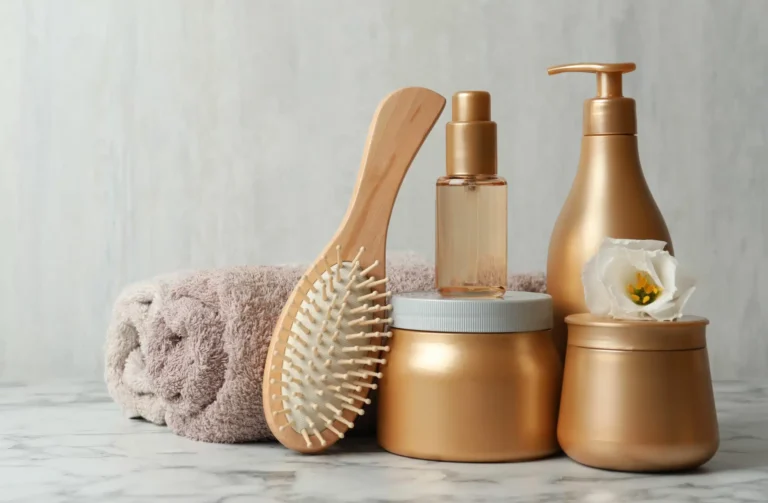Living with rosacea can be challenging, especially under the harsh Australian sun and ever-changing climate. Rosacea is a chronic skin condition that causes redness, visible blood vessels, and sometimes bumps and pimples on the face. While there is no cure, proper skin care can significantly reduce flare-ups and keep your skin healthy and comfortable. This guide is designed specifically for Australians, considering local environmental factors and available products to help you build an effective rosacea skin care routine rosacea skin care Australia.
Understanding Rosacea and Its Triggers
Rosacea affects people differently, but common symptoms include facial redness, swollen red bumps, visible veins, and a burning sensation. The condition often progresses in cycles, with flare-ups followed by periods of remission.
For Australians, key rosacea triggers include:
- Sun exposure: Australia has one of the highest UV indexes in the world, and sun exposure is a major trigger for rosacea.
- Heat and humidity: Warm climates can dilate blood vessels, increasing redness.
- Wind and dust: Dry and dusty environments can irritate the skin.
- Spicy foods, alcohol, and caffeine: Common dietary triggers.
- Stress and anxiety: Emotional changes can impact skin conditions.
Identifying personal triggers through observation or a trigger journal can help manage flare-ups more effectively.
Building a Rosacea-Friendly Skin Care Routine
An effective rosacea skin care routine is gentle, protective, and tailored to sensitive skin. The goal is to reduce inflammation, protect the skin barrier, and avoid harsh ingredients that may cause irritation.
Gentle Cleansing
Cleansing is essential, but harsh cleansers can aggravate rosacea-prone skin. Opt for fragrance-free, non-soap cleansers that don’t strip the skin’s natural oils.
Tips for cleansing:
- Wash your face with lukewarm water—hot water can worsen redness.
- Use your fingertips instead of washcloths or exfoliating devices.
- Pat the skin dry with a soft towel, don’t rub.
Recommended Australian products include Cetaphil Gentle Skin Cleanser and La Roche-Posay Toleriane Dermo-Cleanser.
Moisturising to Repair the Skin Barrier
A damaged skin barrier can increase sensitivity and redness. Moisturising helps lock in hydration and reduce the effects of external irritants.
Choosing the right moisturiser:
- Look for ingredients like ceramides, hyaluronic acid, niacinamide, and allantoin.
- Avoid alcohol, menthol, and synthetic fragrances.
Brands like QV, Avene, and MooGoo offer rosacea skin care Australia products formulated for sensitive skin.
Sun Protection is Essential
UV rays are a major rosacea trigger, and Australia’s high sun intensity makes daily sun protection critical.
Sunscreen tips for rosacea-prone skin:
- Use a physical (mineral) sunscreen with zinc oxide or titanium dioxide.
- Choose SPF 30 or higher.
- Opt for fragrance-free, non-comedogenic formulas.
Australian-made options like Invisible Zinc and Ego Sunsense Sensitive are excellent choices for everyday wear.
Choosing the Right Products
When selecting skin care and cosmetic products, it’s important to read labels carefully. Rosacea-prone skin reacts poorly to many common ingredients.
Ingredients to Avoid
- Alcohol (ethanol, SD alcohol)
- Menthol and peppermint oil
- Fragrance (both synthetic and natural)
- Witch hazel
- Glycolic acid and salicylic acid in high concentrations
Ingredients That Help
- Azelaic acid: Helps reduce redness and inflammation.
- Niacinamide: Strengthens the skin barrier and calms irritation.
- Green tea extract: Offers antioxidant and anti-inflammatory benefits.
- Licorice root extract: Naturally brightens and soothes the skin.
Many local rosacea skin care Australia brands now include these beneficial ingredients in their formulations.
Australian Climate and Its Effects on Rosacea
Australia’s climate varies widely, from dry desert to tropical humidity and coastal breezes. Each of these can affect rosacea differently.
Hot and Dry Climates
Areas like Central Australia can worsen rosacea due to dry air and dust. Hydrating skin care is key—use humectants like glycerin and hyaluronic acid, and seal them in with emollients.
Humid and Coastal Areas
In Queensland or Northern NSW, humidity can trigger flare-ups by increasing skin temperature. Lightweight, non-comedogenic products and oil-free moisturisers are better suited here.
Cold or Windy Regions
In parts of Tasmania or Victoria, winter winds can strip moisture from the skin. Richer creams and protective balms can help maintain hydration and reduce sensitivity.
Lifestyle and Dietary Tips
Beyond topical care, your daily habits and diet can also impact rosacea symptoms.
Diet Modifications
Some foods commonly trigger rosacea flare-ups:
- Spicy foods
- Hot beverages
- Alcohol (especially red wine)
- Dairy and processed sugar
Keeping a food diary can help identify and eliminate problem items.
Stress Management
Emotional stress is a known trigger. Consider:
- Meditation or yoga
- Deep breathing techniques
- Regular physical activity (moderate, not too intense)
Avoiding Temperature Extremes
Long hot showers, saunas, and overly heated rooms can worsen rosacea. Try to stay in a neutral temperature range and use a humidifier during dry months.
Professional Treatments and Therapies
If rosacea becomes difficult to manage with home care, consulting a dermatologist is essential. Australian dermatologists are well-versed in treating rosacea in diverse climates and skin types.
Common Professional Treatments
- Prescription creams: Such as metronidazole or ivermectin.
- Laser therapy: To reduce visible blood vessels and redness.
- Oral antibiotics: For inflammatory rosacea.
- LED light therapy: Offers a non-invasive way to reduce inflammation.
Ask your dermatologist about treatments that are both effective and safe for sensitive Australian skin.
Makeup Tips for Rosacea-Prone Skin
Makeup can help even out skin tone and boost confidence, but it must be selected carefully.
Makeup recommendations:
- Use mineral-based makeup with zinc oxide or titanium dioxide.
- Avoid heavy foundations with alcohol or fragrance.
- Apply green-tinted primers to neutralise redness before applying foundation.
Australian brands like Nude by Nature and Inika Organic offer suitable options for rosacea skin care Australia users who want gentle yet effective coverage.
The Importance of Patch Testing
Before introducing any new product, always patch test it on a small area behind the ear or under the jaw. Wait 24–48 hours to see if redness or irritation occurs. This precaution can prevent widespread reactions.
Final Thoughts
Rosacea management requires a combination of thoughtful skin care, lifestyle adjustments, and professional support. Australians face unique environmental factors that make it even more important to choose the right products and strategies.















